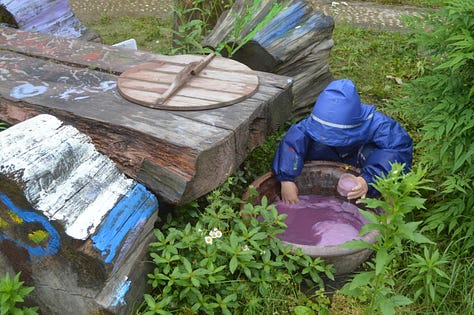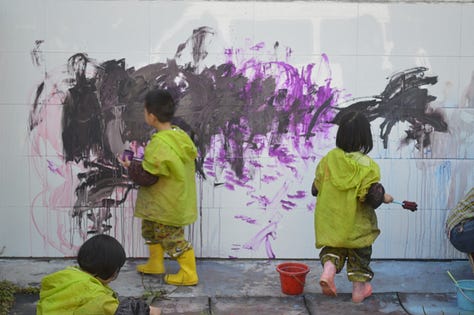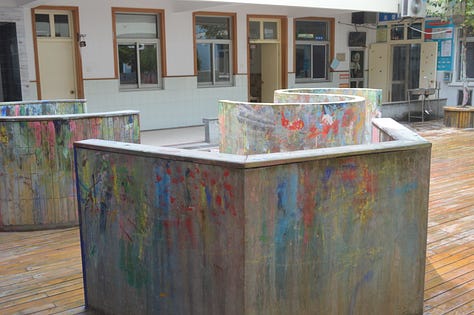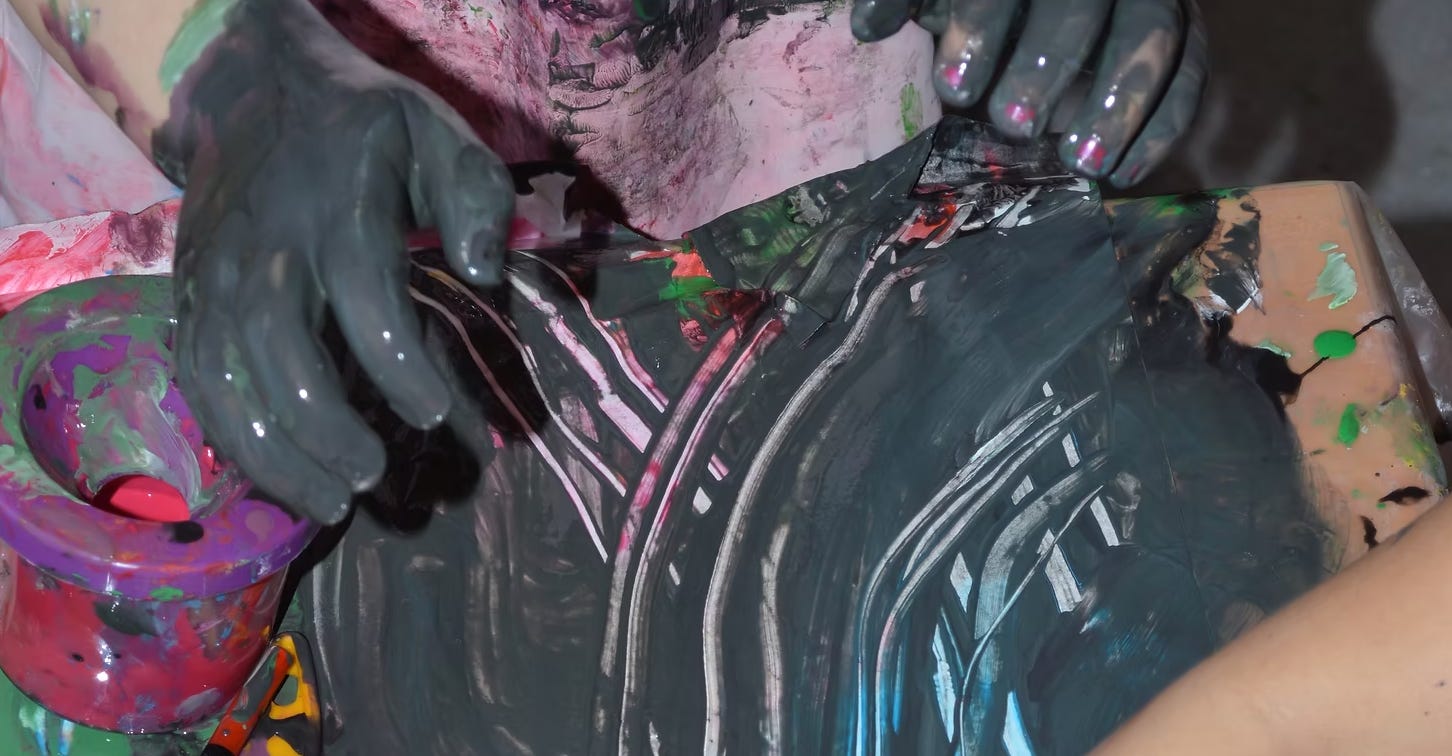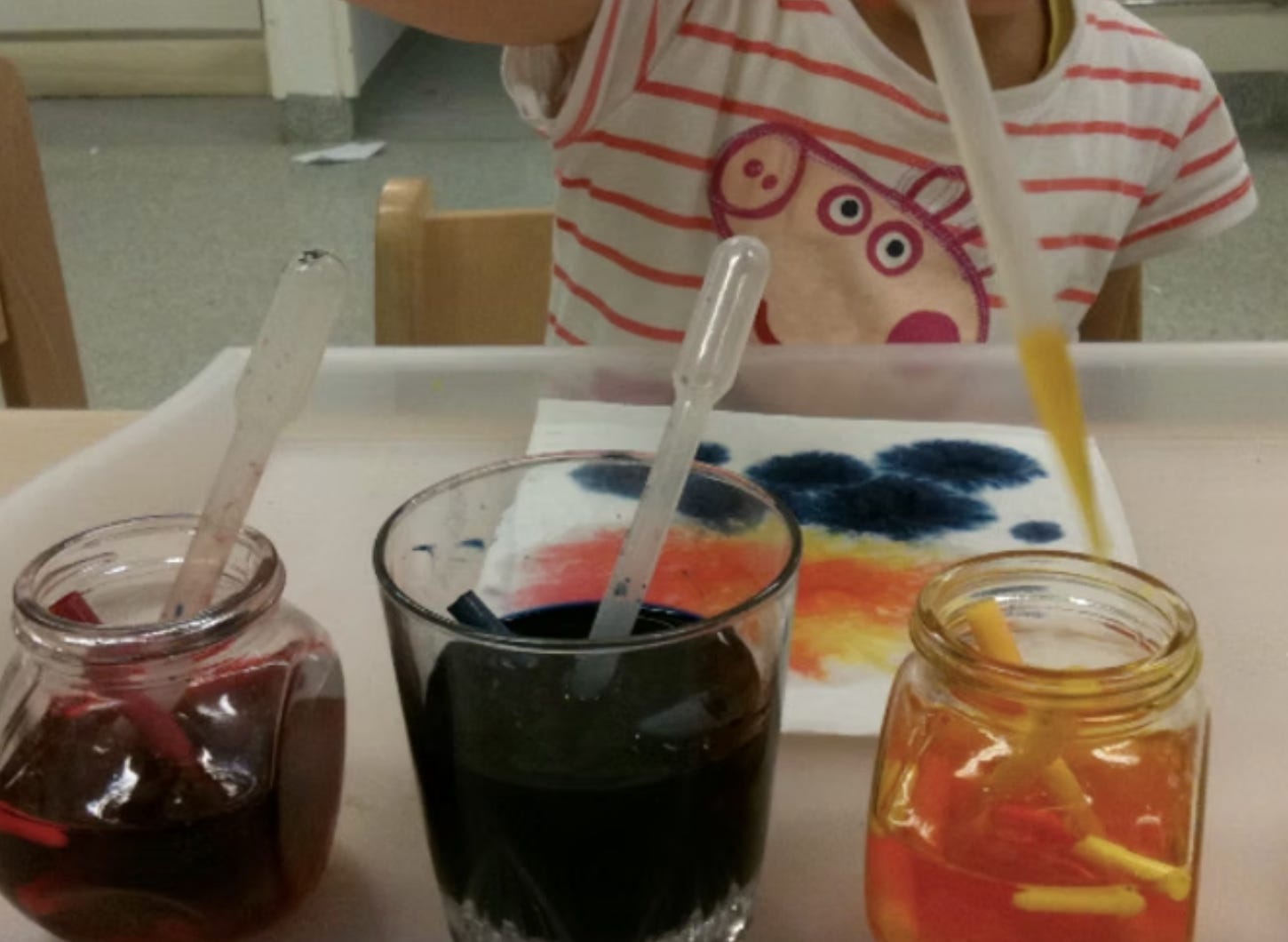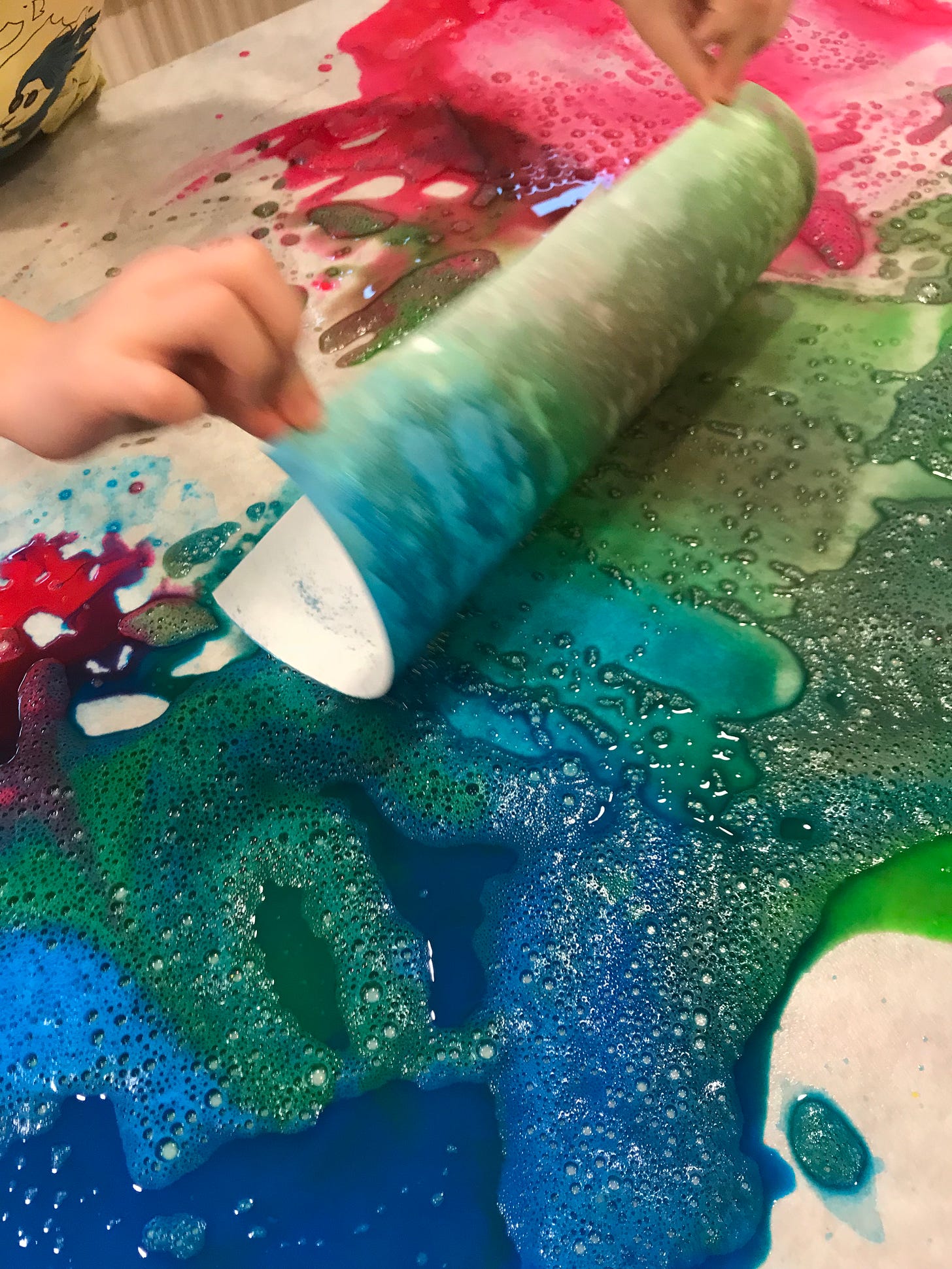Messy Art
Why do teachers hate mess, part 2
Messy art can be about lots of tiny paper bits, or clay, or any materials that require work to clean up afterwards - spilled water, stains etc. How we view the clean up process is going to impact what kind of freedoms we offer children. How children are included in these processes is also going to impact how the children engage with the materials.
I once had a child that, when in the care of the “closing teacher”, spent time alone in a room with the sensory table filled with out of date dried lentils. They thoroughly enjoyed themself by spreading the lentils everywhere. I have images in my head of them tossing them like fairy dust, dancing and enjoying it.
The next day I came to the room and it was covered in a thin layer of lentils… from the floor to the highest shelf. It was impressive. And crunchy underfoot.
I breathed. It was moments away from our morning gathering where we would eat fruit and talk about our day. Calmly I found out from the closing-teacher what had happened, and their obvious dislike of the “messy sensory table” and their decision to “teach me a lesson” by leaving the mess rather than tidying it up, or letting me know. I then went to the child in question. I simply said “it looks like you had a lot of fun yesterday, but today I need you to come and help me tidy up your fun so we can all meet”. We cleaned up together, their peers and friends came to help too. I asked if they had enjoyed the process, and they shook their head - which surprised me, because there was just so much lentils everywhere that it implied that they had enjoyed throwing them around, so I wondered how the other teacher had reacted and whether this had made the child feel ashamed of what must have been experienced in the moment as joy..
I was not the slightest bit angry or frustrated with the child. This child was playing and learning. The child also learned, by being involved in tidying-up as an act of responsibility rather than as a punishment, to make smaller messes in the future… or as I suggested, make big ones with natural materials outside that don’t need cleaning up - like tossing autumn leaves around.
This is why it is so important to include the children. They have the right to make a mess, but they also have responsibilities - responsibilities should always be in tune with the child’s capacity and maturity.
Here are a few messy art ideas that are both small and large that can help us reflect on the possibilities. I have worked at settings where I was not allowed to make messes on the floor, even in the atelier, and have found ways to overcome that with shower curtains or sheets etc on the floor so that children did not feel limited by my anxiety over getting into trouble with mess.
Mess with coloured water. ( I used the inside of dried pens to colour the water) Using a tray to minimise the spread of the mess and wetness.
Allowing the mess also allows for new discoveries… for example, paint doesn’t just make marks when you paint on, but also when you scrape off.
Some messy activities, like flicking paint on a toothbrush, can be enjoyed by placing the paper inside a cardboard box on its side to allow flicking in multiple directions while minimising just how much of the classroom becomes speckled. Some speckles are small, others are bigger… and the children soon learn what direction to scrape the toothbrush so that they don’t get covered in paint themselves.
Sometimes together, sometimes alone. Finding multiple ways to fully explore and enjoy. If I don’t have a sink close by, then I will often have a large bowl/bucket/box of soapy water and towels for the children to clean up in instead of leaving paint trails between the studio and the sinks.
Sometimes I notice that the experience is bigger than I thought it was going to be, and I have to make a snap judgement - do I keep the initial boundaries on the experience or do I expand them? The decision will be rooted in my own energy levels, my knowledge of the space and materials, my knowledge of the children and their capacity to enjoy an expansion of the experience (as some children might get overwhelmed and maintaining a positive experience for all the children take precedence over a few children’s desire to expand the mess), and also that there is enough time to both enjoy and clean up without stress. The below image we were blowing bubbles in cups of paint mixed with dish soap and water to capture on paper. The children, though, were more interested in making the bubbles cascade over the sides and go over the table and for the different colours to meet each other. I knew this mix of paint and soap would be easy to clean, and that several of the participating children would really enjoy the clean up process, so I let the experience expand. We took prints of the table flow instead. And yes, In some spots the liquid started to drip on the floor. I kept mopping the floor to ensure it did not get slippery - which would not have benefitted the experience and could have become a hazard.
I also ensured there was enough time to enjoy the tidy up process.
“Clean” messy art… for example, using a metal ball and magnet to enable a messy kind of art that doesn’t result in being personally messy. Prints were made to capture the work. This works well with children who are mess averse. I am always looking for ways to create inclusive environments for all children - both those children who need lots of sensory input and where getting messy meets that need, and children who are easily overwhelmed and messiness can create anxiety.
Full body painting has been a consistent favourite over the years… and I have done this in multiple ways both inside and outside. I will take into consideration the age and ability of the children - paint on paper will be slippery, but paint on fabric is not. Sometimes the slippery nature is a sought after experience - other times it is a hinderance. Making decisions about the materials we use is vital - knowledge of the materials equally so. So I recommend that you play and test them too - I prefer to try things out before introducing them to the children, so that I am prepared to meet the questions, needs, desires and anxieties of the children when they engage with them.
I always have dialogues with the children’s parents about clothes, mess, expectations and cleaning up. I once worked with a fair haired child that smeared blue paint into his hair and stained it green for several washes - much to his parents' horror and amusement. Just as I have picked up my own children after a day in the forest stained with blueberry juice all over their face because they had “made” make-up. That moment of horror is soon overcome by amusement (and the awareness that everyone on the underground train would be staring at my purple faced twins grinning from ear to ear).
Simply put. We have to get comfortable with the mess. It is going to happen. How big depends on your attitude. It’s not a simple “more mess more fun” ratio… It is about the freedom to explore the materials, and sometimes that can make a mess, but not always - and one child’s freedom can limit another child - so finding balance in the freedom and the mess is what we need to be reflecting on.
Finally I end with some photos from AnjiPlay Kindergartens in China - that designed their art areas for play and exploration. Plenty of water, choices of tools, and different surfaces for the children to engage with fully. This knowledge of children wanting to play with art materials and not only make art and to then practically meet this play need through the design of the space and the permission of the teachers is truly inspirational.


